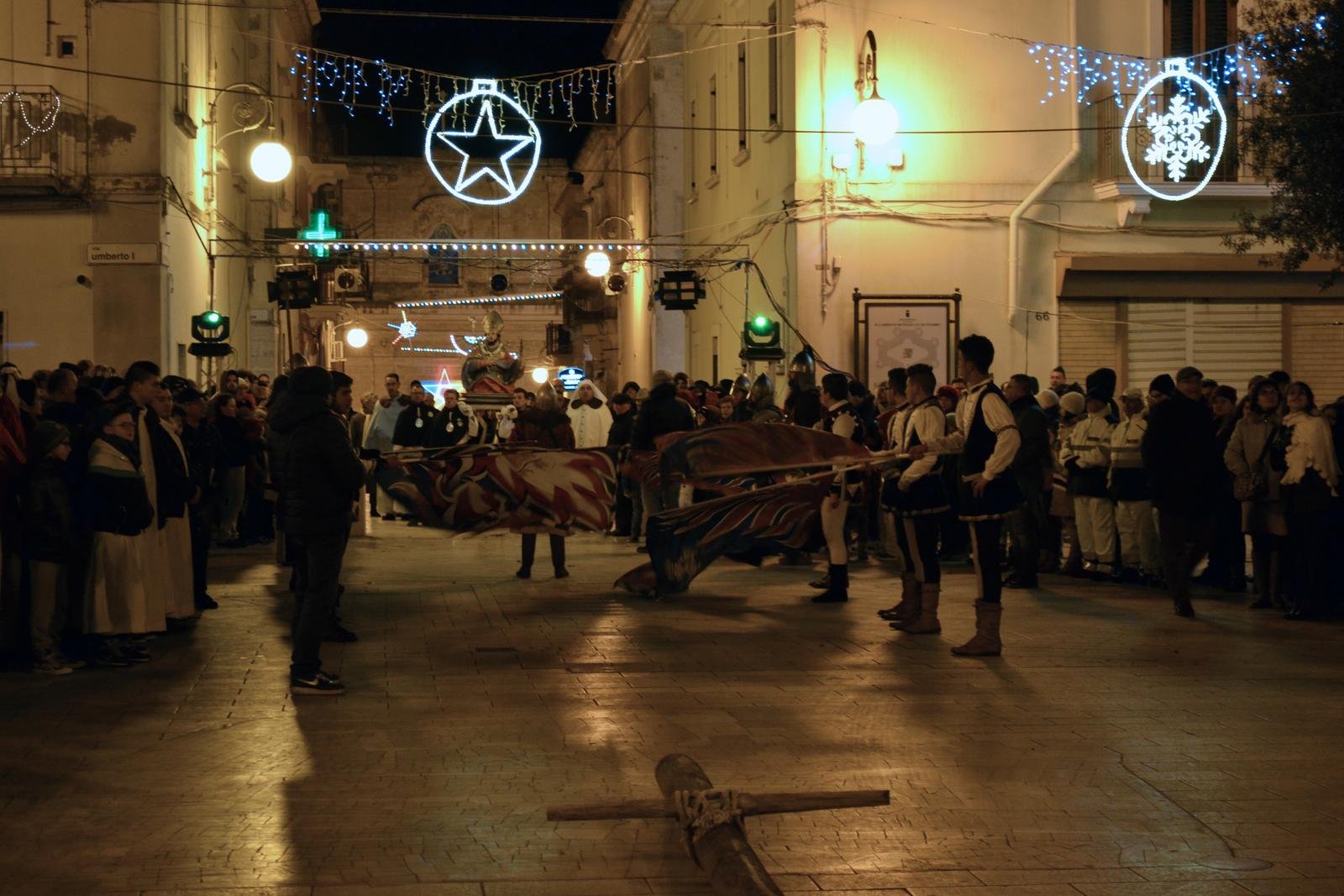The debate on the cult of St. Thomas Becket in Mottola and his elevation as a patron is still controversial.
The English saint was killed in the Cathedral of Canterbury in 1170 by four assassins paid by Henry II because he had defended the autonomy of the church against that of the kingdom. In February 1173 he was proclaimed a saint and included among the martyrs by Pope Alexander III during his own stay in Segni, near Anagni.
The link with Mottola, according to local tradition, dates back to the siege of the town by the inhabitants of Taranto in 1102: bishop Alimbert, to defend his people, was killed and the town completely razed to the ground. According to legend, the reconstruction of the cathedral was dedicated to the English Saint because his vicissitudes reminded those of the bishop of Mottola.
In fact, a fresco and some 13th century relics in the former “Santa Maria Assunta” Cathedral would attest the cult of the English martyr in Mottola immediately after his canonization. It’s probable that the diffusion of the cult took place through the abbey of Cava dei Tirreni in its properties including monasteries and lands of Mottola due to direct dispositions of Pope Alexander III.
There are no news until the 16th century when we know that the cult was rekindled as a reaction to Henry VIII’s attempt to erase his memory.
The new cathedral rebuilt in 1507 was still dedicated to Thomas Becket and in 1700, in a new phase of veneration, was embellissed with a wooden statue and a painting by the Count Malinconico depicting the Assunta into heaven and St. Thomas.
In the days dedicated to him (December 28 and 29), in addition to religious celebrations Mottola celebrates its patron with medieval settings, padares, concerts, theatrical performances.
To learn more: P. Dalena, “Da Canterbury a Mottola. Il culto di San Tommaso Becket nel Mezzogiorno d’Italia”, Bari 2018.

